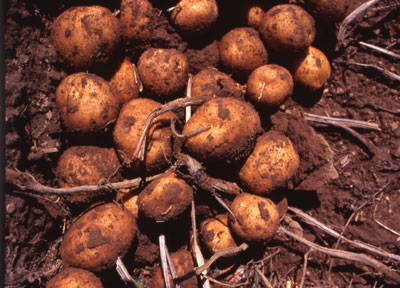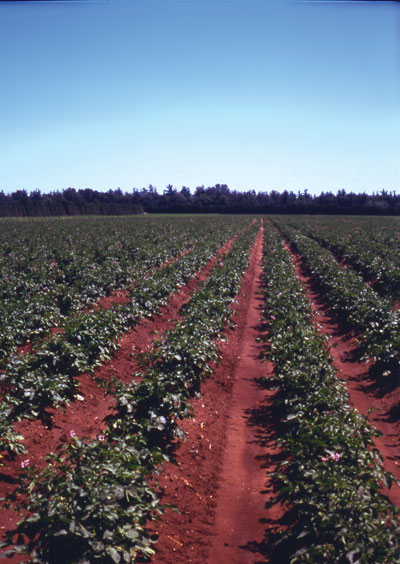
Features
Agronomy
Fertility and Nutrients
Getting the most from starter fertilizer
While many growers and agronomists believe that using a starter fertilizer in the spring is necessary in order to improve yields and strengthen plants to minimize disease and pest pressure, paying attention to when, where and how the starter is applied is the only way to get the desired benefits.
April 30, 2009 By Potatoes in Canada
 |
| Growers need to sample soil, determine nutrient levels, then develop a blend of products to balance soil nutrition. |
While many growers and agronomists believe that using a starter fertilizer in the spring is necessary in order to improve yields and strengthen plants to minimize disease and pest pressure, paying attention to when, where and how the starter is applied is the only way to get the desired benefits. As with most crops, the availability of moisture at the right time will also affect the uptake of the nutrients.
According to Rudy Allen, a certified crop advisor in Washington State, any starter fertilizer needs to be four inches away from the seed piece in all directions; if it is not, there could be damage to the seed. He also recommends that starter fertilizer only be applied after careful analysis and planning. “You need to soil sample, learn your nutrient levels and then develop a blend of products to balance the soil nutrition,” he advises. “At planting a grower needs to test for phosphate, potash and micronutrients.”
A certified crop advisor near Orangeville, Ontario, suggests starter fertilizer is important in the spring, especially phosphorous, if fall soil test levels are not optimum. John Lightle of Holmes Agro says starter has value in row particularly for phosphorus. “Starter offers fertility close to the seed piece which will initiate rooting,” he explains.

|
| When it comes to balancing nutrients, each field must be treated individually.
|
Lightle conducted some comparisons of starter fertilizer options in field tests in 2008. On five separate farms, starter showed small yield improvements particularly when used in liquid form. In one situation, 30 gallons of 5-20-5 applied to Yukon Gold potatoes resulted in a yield increase of 26 percent above the normal for the field. Contrarily, on another farm the same formulation of starter applied to Gold Rush potatoes showed no yield advantage.
Lightle’s goal in doing the trials in field situations was to show that low rate liquid starter systems can compare to dry fertilizer starter applications if the soil is balanced and has optimum nutrient levels. His examinations also showed how each field must be treated individually and how varieties respond differently to formulations depending on the field. “Growers need to know their soils and their varieties because responses can be different,” Lightle concludes. “In my recommendations, I try to help growers choose products and formulations they need based on their soil’s background. I don’t want my growers using something that I’ve shown doesn’t work; I would rather they use what does work.”
Allen concurs. He says without moisture, such as that supplied through irrigation, starter fertilizer does not always provide the boost growers are seeking. “Each farm needs to be assessed individually,” he continues. “If the proper nutrition is in the soil and the plant can utilize that available nutrition, then there may not be any benefit in using a starter fertilizer.”
As with Lightle’s field tests, Allen agrees that growers need to gauge the results they desire against published standards for each variety. “Start with a spring soil test and compare to the set standards and know what your soil is telling you” is Allen’s advice. “For example, Chieftain requires more fertility than Yukon Gold because it yields higher. We tweak the soil test requirement to the needs of the variety.”
When “tweaking”, as Allen suggests, growers need to base their decisions on their anticipated outcome. “Starter fertilizer is a good idea depending on the needs of the crop,” says Allen. “Growers don’t want to spend money if they don’t have to, but they don’t want to short the crop either.” In the end, starter fertilizer is useful under the right conditions, and when applied following careful analysis of the soil and the needs of the intended crop. Both Lightle and Allen suggest that without good information, using starter fertilizer is, at best, a gamble. An advantage results from careful analysis of available information rather than application using the “let’s see if it helps” approach. One scenario makes money, the other could cost money.